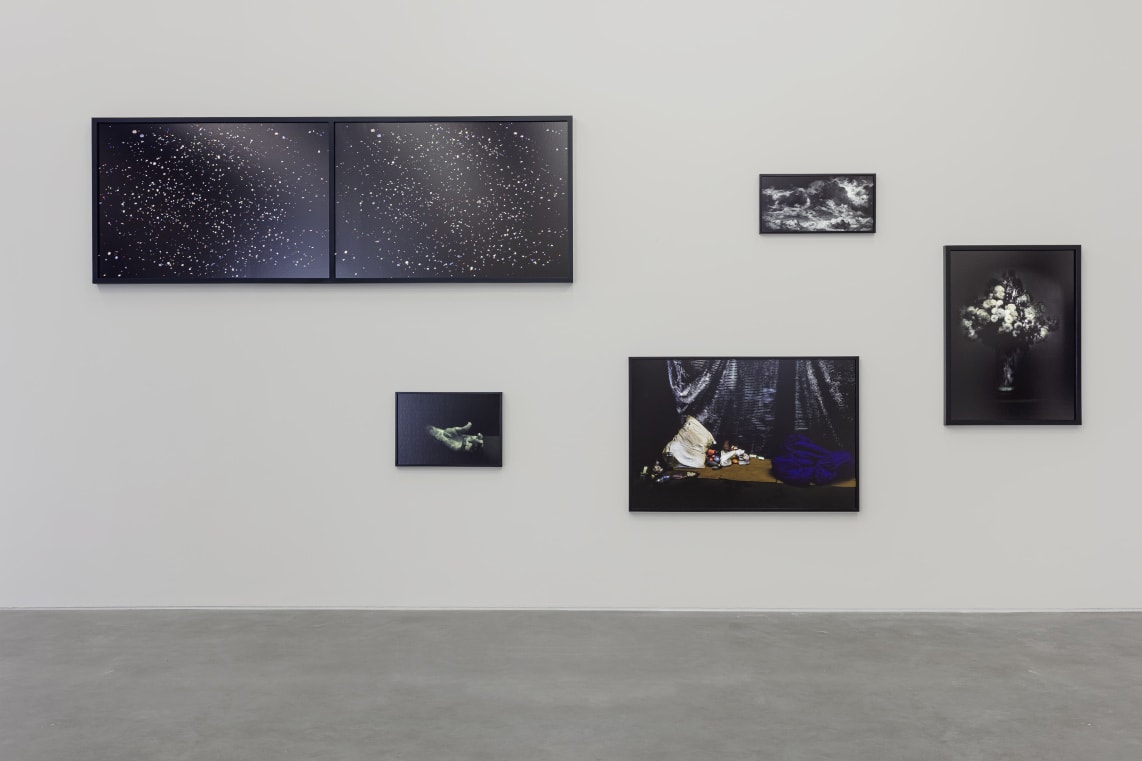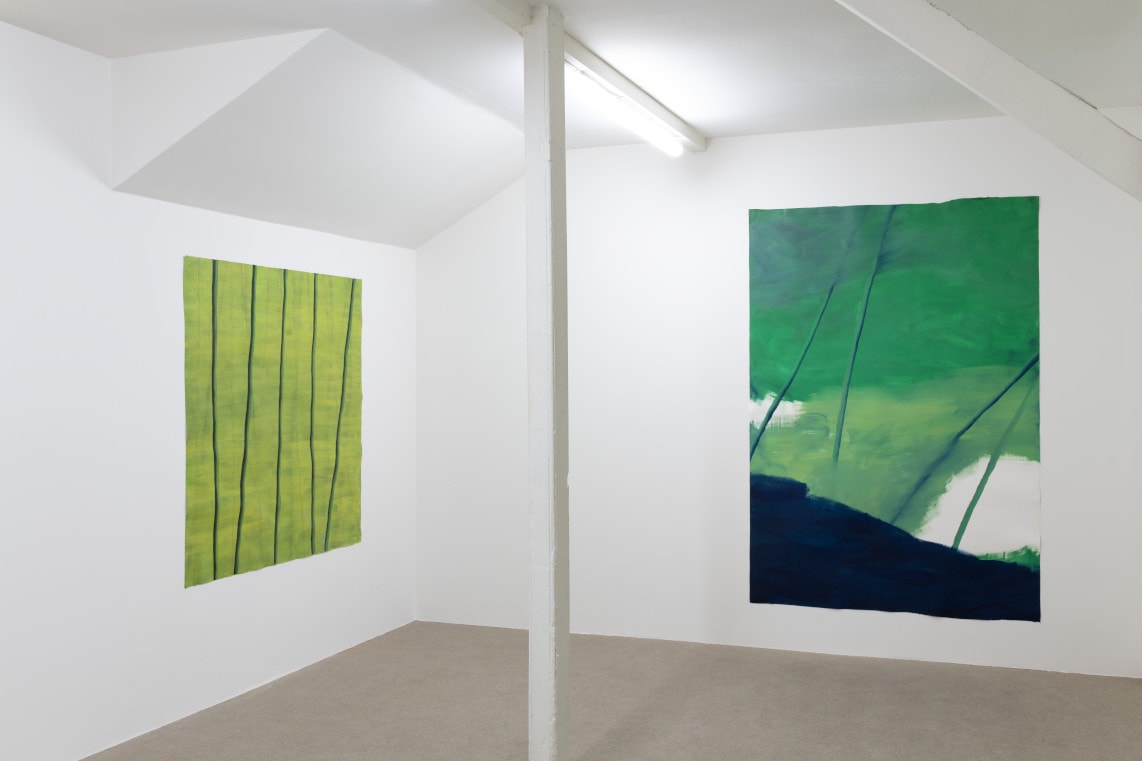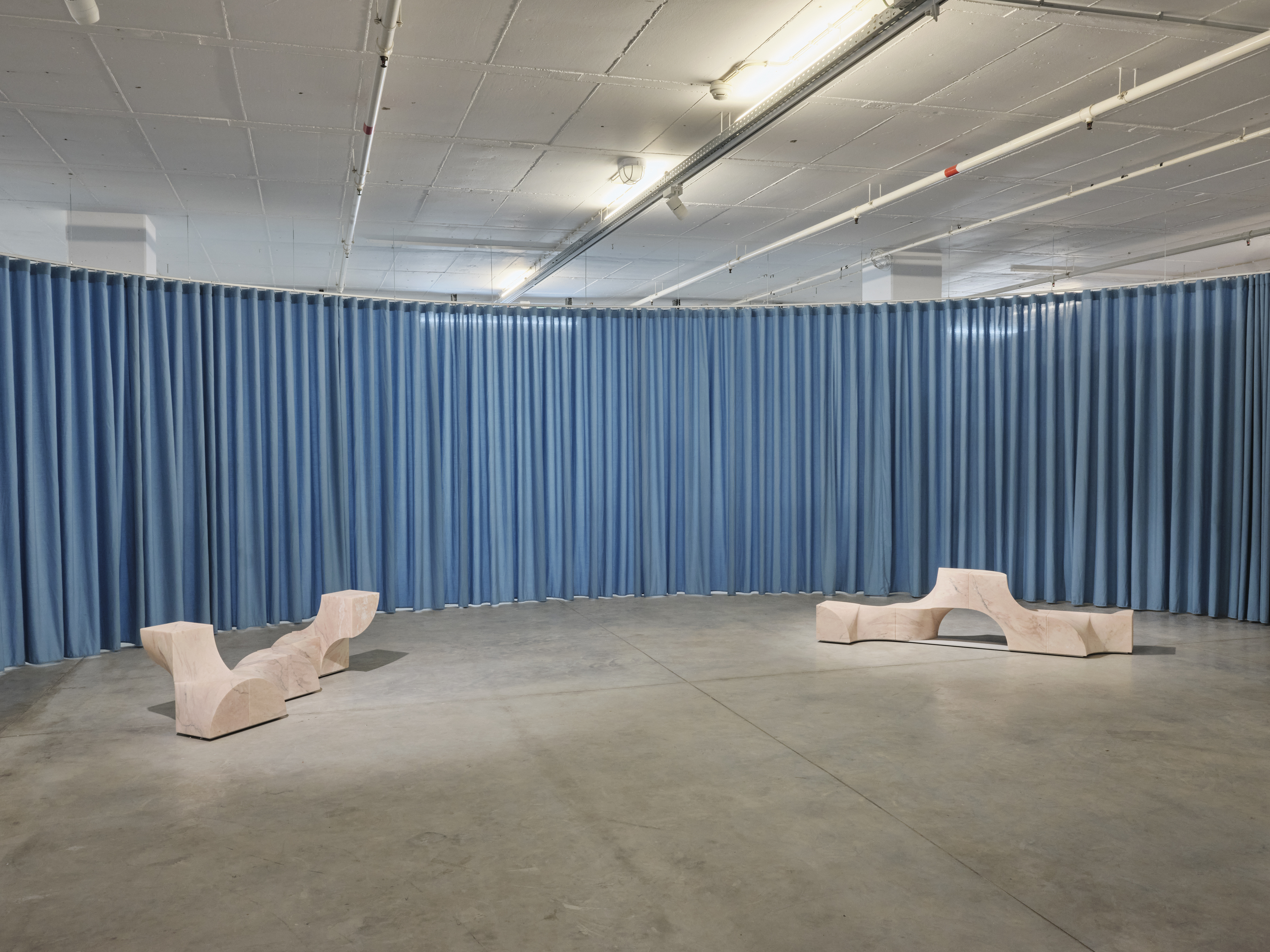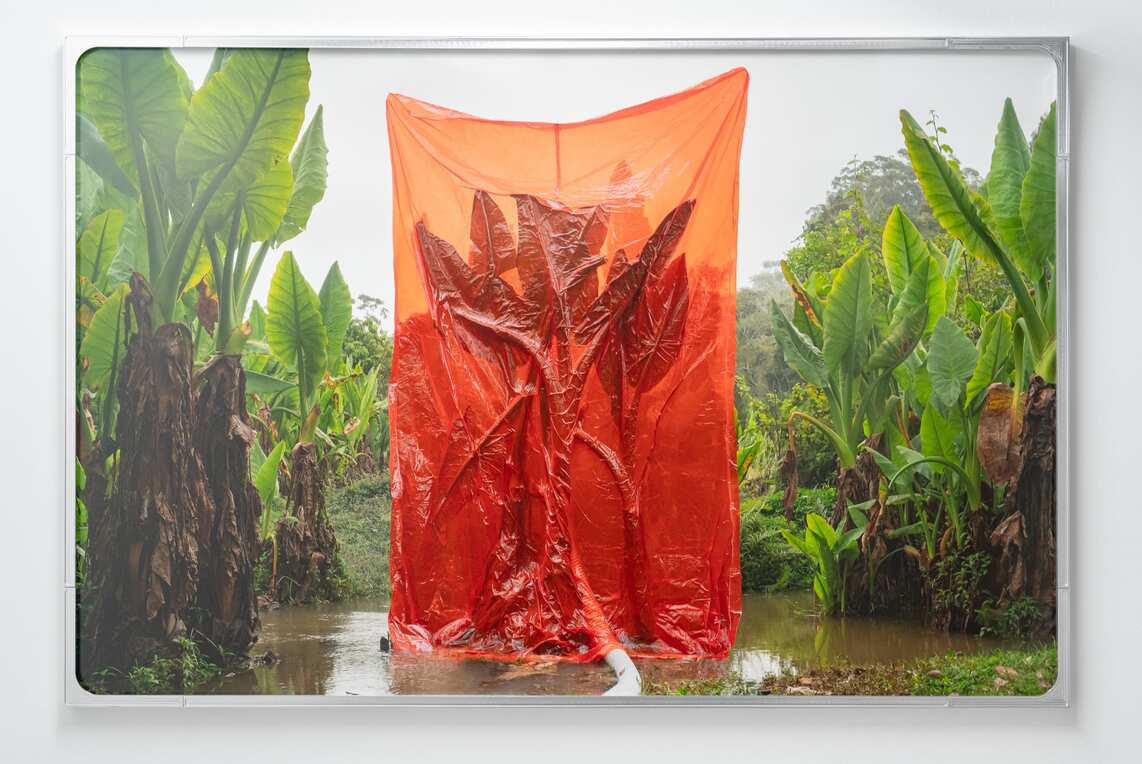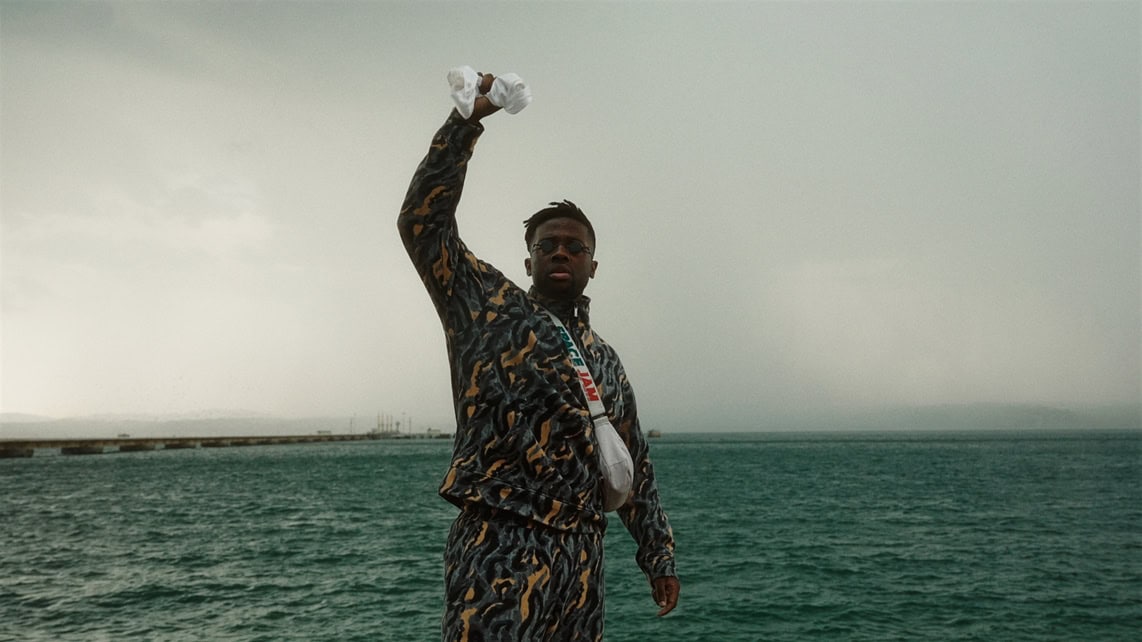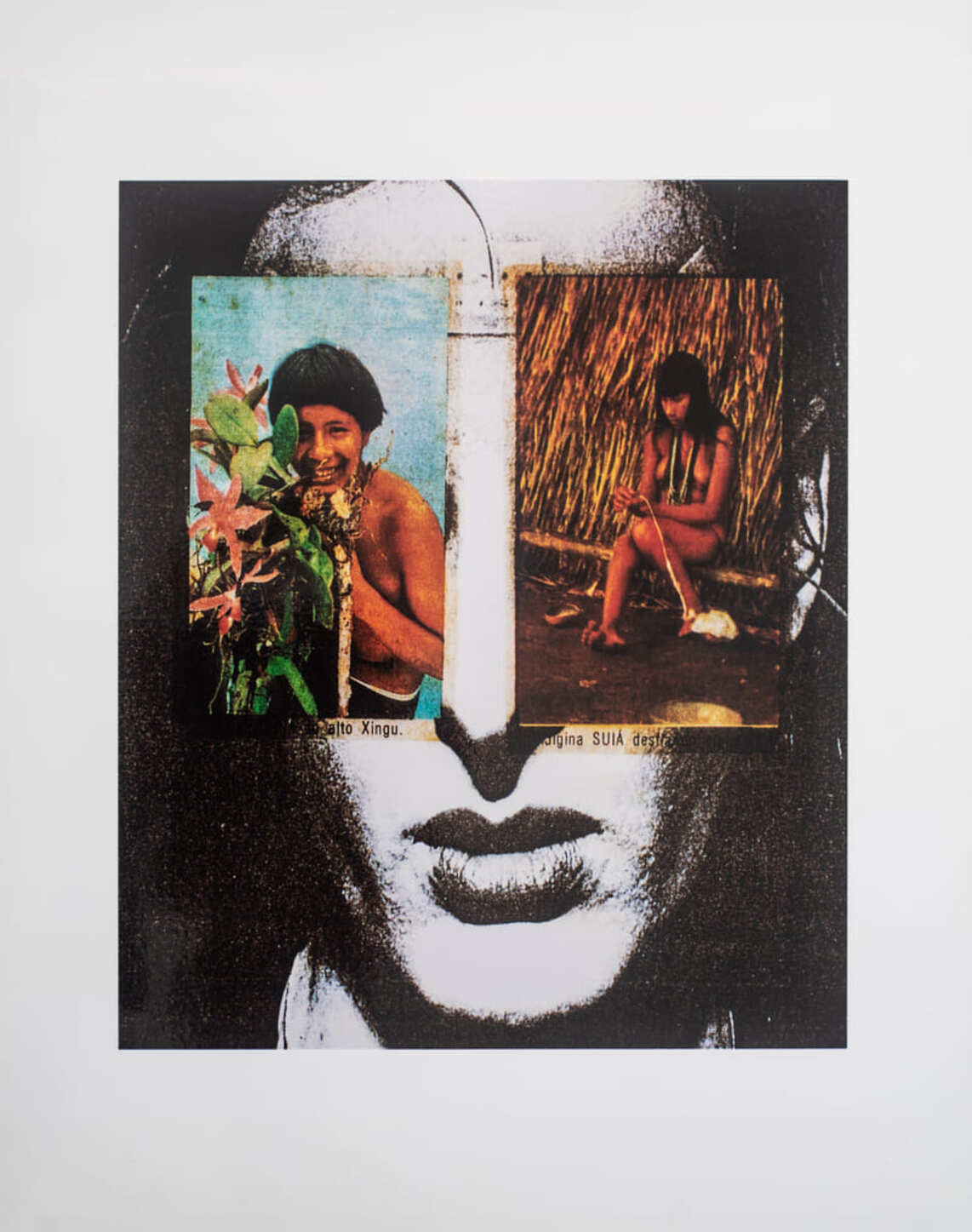My visit to Miguel Soares’ Chance Meeting exhibition at Rialto6 took place quite a while ago, since I started writing this text. I must confess, from the outset, that I’m not the best at taking notes either: on revisiting my notebook, I’m confronted with random streams of thought and impressions, flimsily recorded in statements such as “who is the filming eye, waiting for a supernatural manifestation?” and “do you know how much power we have? It’s ridiculous!“, a transcription of an extract from a video featured in the exhibition. Much to my surprise, however, the return to Miguel Soares’ worlds was immediate; I can still feel in detail, on my skin and ears, that visual and sonic wonder taking is over the gallery’s rooms in Lisbon until December 15.
In Chance Meeting, four of Soares’ video installations from this year are paired with three works from the beginning of the millennium, roughly when this versatile artist started concentrating on 3D animation. A digital art pioneer in Portugal, his career spans more than three decades and includes photography, music, design and cinema. Its guiding thread and joint commitment can only be speculation and experimental discipline. The contrast between the recent works and the 2000s images, shown in character on now obsolete monitors, makes us reflect not only on the artistic career of such a prolific and influential name in the Portuguese arts, but also on the relevance of specific concerns that were still in their early stages 30 years ago. Confronted with a Matrix-like aesthetic and computers that now seem Neanderthal, we can easily forget that the internet, Google and Big Data are extremely recent realities. And what can those bygone devices, from a supposedly outdated reality, still tell us about the present and, above all, the future? In this grand “digital age” hat – which hardly manages to encompass so many technological leaps, from electronics to artificial intelligence – what questions remain to be asked?
During an interview[1] with Soares when he received the prestigious BES Photo Award 2007 – included in the exhibition catalogue of the awarded works at the former Berardo Collection Museum -, he reveals that his creative approach has a somewhat scientific method: from formulating a hypothesis to undertaking a series of tests to confirm or justify it. The curator and interviewer Filipa Ramos is spot on when she emphasises this curiosity, so typical and noticeable in the artist’s body of work, to test the reality of things. And be aware that “real” here is shaped by much more complex relationships than just those between truth and falsehood, the possible and the impossible. After all, Soares already sensed at the time that the boundaries between the artificial and the natural were somewhat arbitrary, and would become even more so: “there’s this fractal side [to 3D] which also interests me, since it’s very similar to the tools that nature has at its disposal, meaning that for me 3D doesn’t seem artificial at all, but rather natural. I would almost say that it seems less artificial than painting on a canvas”[2].
There is indeed a special kind of power in works featuring images made with 3D modelling and animation tools superimposed on images of concrete places – particularly in MetaTouch (2023), presented in the gallery’s basement, and the exhibition’s opening piece Encounters (2023). In the first work, two twin spheres of liquid metal are mutually attracted, floating “in perfect harmony, touching each other occasionally and, when the touch is deeper, teleporting to another place where they continue their journey”[3]. Initially, these reflective points appear like molecules in a magnified view, but, as the installation goes on and the meditative state to which it invites us – through a loop that matches the hypnotic sound of a tanpura drone[4] – they increasingly begin to seem like otherworldly figures. They may exist and vibrate precisely at this moment of torque[5] between fiction and matter, metaphysics and physics.
The second video shows the subjective perspective of someone observing a deserted alleyway at night, until a thunderous, metallic and seductive sound heralds the arrival of an enigmatic portal, a black hole, which soon disappears again. Just like the alien structure, the very glance that captures this image of a hybrid nature actually implies the presence of something non-human. The viewpoint we’re following has an animalistic or extraterrestrial feel to it, whose bodily movement resembles a sniffing being, or even an object hanging, weightless, in the air. Miguel Soares perhaps wants to awaken a suspicion that the unknown in this encounter may be precisely what we thought was real: ourselves.
[1] Fully available on the artist’s website <http://migso.net/blog/?p=200>.
[2] Id.
[3] According to the exhibition’s room text, written by Miguel Wandschneider. Available at <https://rialto6.org/exhibitions/chance-meeting/>.
[4] One of the most commonly used string instruments to accompany musical pieces or vocal performances in Indian classical music. This is an outstanding and intriguing instrument due to its ability to generate a complex pattern of overtones in a continuous cycle. Used in meditation practices, the constancy of this sound is used as a metaphor for the eternal, the unchanging and the perpetual.
[5] Torque, or a moment of a force, consists of rotating or twisting a body around its own axis by force.
